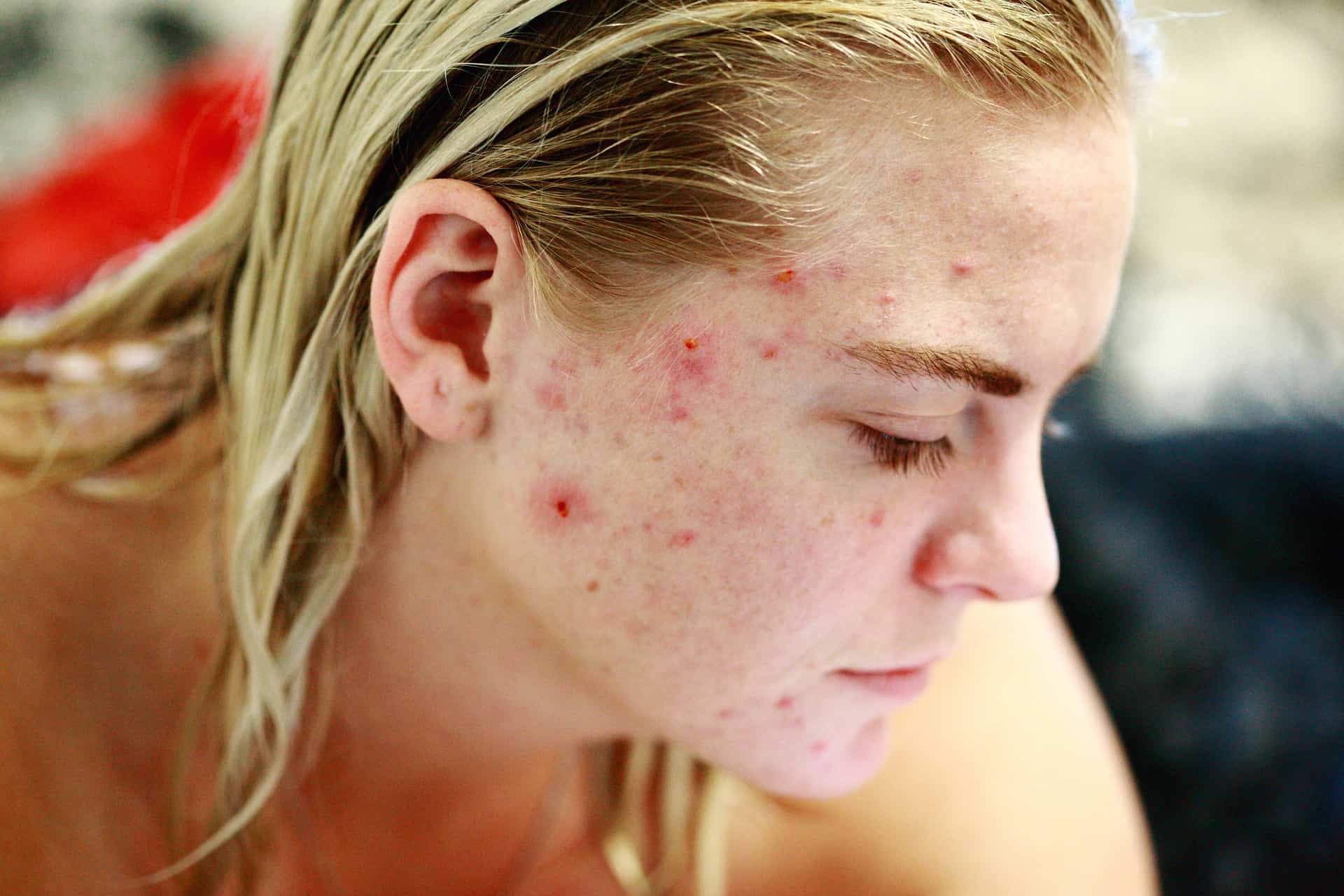When we look in the mirror, we want to see our best selves. Unfortunately, discolored spots on our face, neck, chest, or hands can affect our self-image. This problem of hyperpigmentation or hypopigmentation is common, you might feel all alone.
It’s called hyperpigmentation when dark blotches appear on lighter skin. For people of color, the problem is lighter patches on dark skin. It’s called hypopigmentation, but the causes are the same.
In most cases, hypo- or hyperpigmentation is nothing more than an unwelcome skin condition. There are a few conditions that might trigger the problem, such as Lupus. Fortunately, it’s not likely to be precancerous, such as a common mole.
That said, if you have hypopigmentation or hyperpigmentation, you will find many treatment options available. You’ll want to go slowly, making sure you don’t waste money on products that aren’t right for you. It helps to know what caused your problem as you seek answers to how to tackle it.
During and after treatments, it is vital to take extra measures to shelter damaged skin from the sun. This protection means sunscreen, but it also means covering up, wearing a hat, and seeking the shade.
Hyperpigmentation Causes
Discoloration of the skin can occur for a variety of reasons. If you are searching for hyperpigmentation causes related to your skin, here’s what you need to know.
1. Acne.
Skin injured by acne is likely to discolor due to age or sun exposure.
2. Injuries.
Scar tissue post-injury or surgery is susceptible to a color change as you are exposed to the sun or as you age.
3. Eczema.
Just as eczema harms skin when it is active, it leaves scarring that can change color over time.
4. Freckles.
A genetic disposition to freckling can lead to dark patches on the skin exposed to the sun.
5. Melasma.
Sometimes hormonal changes, such as pregnancy, birth control pills, or menopause, will cause brown patches to appear on your face or abdomen.
6. Age Spots.
Over time, exposure to the sun causes age spots. These may appear on hands or faces. The medical term is solar lentigines. Of course, you may not care what they are called. You want them gone!
7. Medication.
Medication can sometimes trigger temporary skin changes. If you suspect this is your problem, talk to your physician or your pharmacist.
How to Recognize Hyperpigmentation Symptoms
Sometimes it seems to happen overnight. For many of us, it feels like one day, our skin looks okay, and the next patches have appeared on our face, hands, arms, or elsewhere on the body.
The change in the skin happens gradually for most people. For some, time in the sun can speed up the discoloration process. A patch of melanin may have just been waiting for the sun to trigger it.
It’s not itchy or bumpy skin. That’s a different problem with different causes.
When unwanted pigmentation affects the face, it depends on the shade of your skin, whether it will be a lighter or darker color. You may experience:
a) a pregnancy mask, which seems to surround the face’s main features
b) a single significant blemish on the cheek
c) two large matching blotches on the forehead
d) blotches in one or more areas of the face
e) an irregular pattern of blotches
For others, the symptoms occur in other parts of the body, usually those areas exposed to the sun.
a) blotches or blotchy patches on neck, chest or back
b) spots on hands or arms
What are the Most Successful Skin Treatments?
Melasma discolorations are the only ones that may fade on their own, according to the American Academy of Dermatology (AAD). All the rest will need intervention if the unwanted color is to disappear.
There are many directions to go for treatment. Lots of products are on the shelves. So many it can make your head spin. Then you find yourself asking should you go to a dermatologist. After all, they can offer prescriptions and laser treatments.
What’s the best answer for your skin?
That’s the single-most-important question you can ask. The wrong treatment can cause a new discoloration, and you don’t deserve that.
Before you start any treatment, consider these four things:
1 – Hyperpigmentation causes can affect treatment.
You should narrow down the cause because it will help you decide on the right treatment.
2 – A pre-existing problem may need to be resolved first.
In other words, if you have eczema or acne, these must be treated and cured before you can work on a pigmentation issue.
3 – Allergies.
You may be allergic to a product, or your skin tone may be unevenly bleached or otherwise negatively affected by many chemical products. So be careful. Go slowly.
4 – Expensive is not always better
The more effective treatment for your skin may not be a costly one. Don’t waste your money on something unproven.
5 – Seek the best natural solutions
Look for useful natural remedies, recommends the American Osteopathic College of Dermatology.
What are the Natural Choices?
Some of the best natural choices are found in combination with other ingredients in an over-the-counter lightener or another type of cosmeceutical. It may deliver in the form of a lotion or a cream.
1 – Soy.
The same soybean plant that gives us nourishing foods can also provide a melanin suppressant when in combination with other lighteners. Soy acts to block the melanin before it can come to the surface.
2 – Ellagic Acid.
This antioxidant likewise may block melanin from darkening the skin. When used in conjunction with a lightener, it helps keep the color from coming back. The acid is naturally found in pomegranates, cherries, and strawberries.
3 – Liquirtin.
This extract of licorice can lighten skin.
4 – Niacinimide.
This B3 variety stops the melanin from reaching the outer layer of the skin.
5 – Kojic Acid.
This substance, which derives from a fungus, may break down the discoloration and prevent it from getting worse.
6 – Arbutin.
This substance comes from cranberries and blueberries. Scientists consider it a natural source of hydroquinone, a significant chemical in many skin treatments.
What Are Your Pharmaceutical Choices?
If you go to a dermatologist, they may recommend a topical treatment that includes one or all of these. Prescriptions will have higher doses of key ingredients than over-the-counter medicines.
1) Hydroquinone
2) Corticosteroids
3) Tretinoin
Before accepting a prescription, ask your doctor about side effects. Be sure to find out how much you should use and how often you should apply it. Ask your dermatologist about sun exposure risks.
Can You Afford a Procedure?
If you have the money and you want guaranteed results, there are treatments you can get at a dermatologist. Your skin type, your age, and your hyperpigmentation causes will affect which treatment is suggested. Mainly these treatments take off layers of affected skin. It must be done scientifically, but it is possible to get lasting results.
When discussing these procedures with your doctor, be sure to ask about side effects that may make your skin worse. You also want to learn if the process will require downtime afterward. Some procedures need you to stay inside for a few days. There may be slight discomfort or pain involved.
Your dermatologist may recommend:
1) Laser treatment. A pigment-specific laser can be used to penetrate the skin’s surface.
2) Microdermabrasion. Through a series of treatments, the old skin is removed through gentle exfoliation. This process is effective on melasma, age spots, and acne spots.
3) Dermabrasion. This exfoliation method is a more aggressive way of removing the top layers of skin.
4) Chemical Peel. Performed in a surgical setting, the patient is under anesthesia during this procedure.
Skin Care During and After Treatment
Even though the treatments help your skin, the treated areas will remain vulnerable for some time to come.
You’ll want to protect your skin during and after treatment. The most important step you can take is to keep the affected skin out of the sun. This means more than using sunscreen. You may need to wear a hat that shades your face and blocks the sun from touching the part of your skin that is or was under treatment.
While nutrition can’t solve it, it doesn’t hurt to add skin enhancing natural ingredients to your diet.
 Final Thoughts on Hyperpigmentation
Final Thoughts on Hyperpigmentation
If you have skin discoloration, don’t be discouraged. There have never been as many solutions as there are today.
Save your money. You can start with the least expensive and see how far it will take you before you invest in a more costly approach.
Try to be patient with the process. Even dermatologists can’t promise you overnight results. The problem happened over time, and it will take time to correct.
Be kind to yourself. Often our self-image affects our mental health. Remember that you are a unique individual who shouldn’t be defined by looks.


















